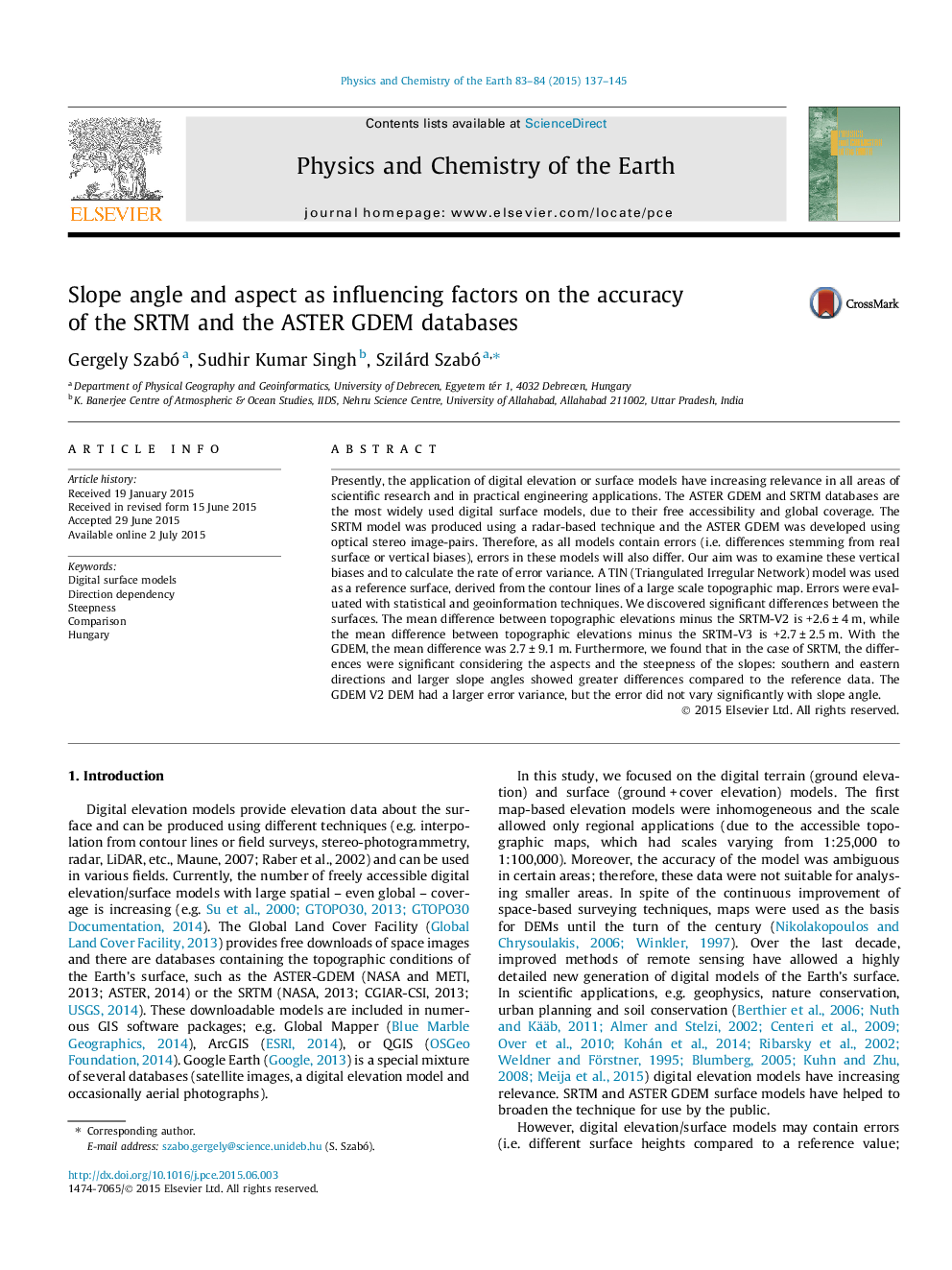| Article ID | Journal | Published Year | Pages | File Type |
|---|---|---|---|---|
| 4720896 | Physics and Chemistry of the Earth, Parts A/B/C | 2015 | 9 Pages |
•An accuracy assessment of SRTM and GDEM is proposed.•Slope aspect biased both azimuth and elevation values of SRTM V2 and V3 and GDEM V2 models.•Slope angle influenced all models’ vertical error.•Common effect of slope angle and aspect had significant influence on all models’ errors on SRTM’s errors.
Presently, the application of digital elevation or surface models have increasing relevance in all areas of scientific research and in practical engineering applications. The ASTER GDEM and SRTM databases are the most widely used digital surface models, due to their free accessibility and global coverage. The SRTM model was produced using a radar-based technique and the ASTER GDEM was developed using optical stereo image-pairs. Therefore, as all models contain errors (i.e. differences stemming from real surface or vertical biases), errors in these models will also differ. Our aim was to examine these vertical biases and to calculate the rate of error variance. A TIN (Triangulated Irregular Network) model was used as a reference surface, derived from the contour lines of a large scale topographic map. Errors were evaluated with statistical and geoinformation techniques. We discovered significant differences between the surfaces. The mean difference between topographic elevations minus the SRTM-V2 is +2.6 ± 4 m, while the mean difference between topographic elevations minus the SRTM-V3 is +2.7 ± 2.5 m. With the GDEM, the mean difference was 2.7 ± 9.1 m. Furthermore, we found that in the case of SRTM, the differences were significant considering the aspects and the steepness of the slopes: southern and eastern directions and larger slope angles showed greater differences compared to the reference data. The GDEM V2 DEM had a larger error variance, but the error did not vary significantly with slope angle.
